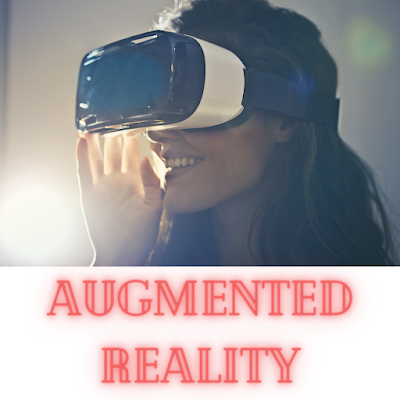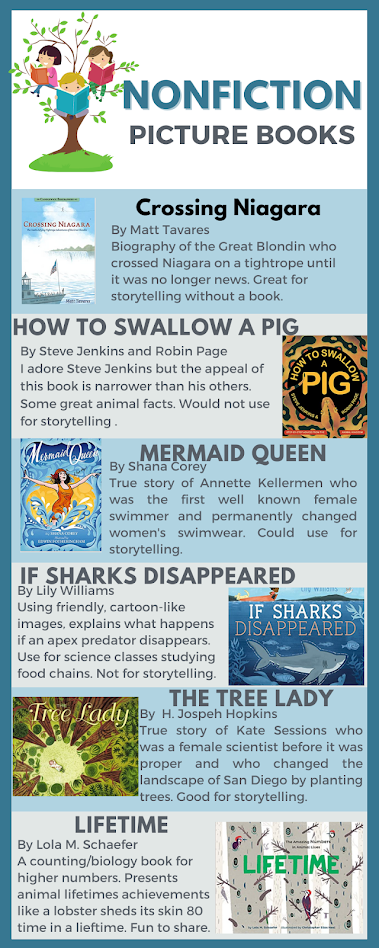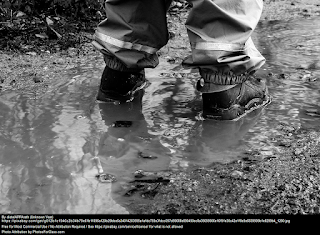Labster in the high school classroom
This week I explored AR and VR in the classroom. Normally, I move toward the elementary end of the education spectrum. Today I am going higher, in my mind AP Chem or AP Biology. The reason? AR and VR are cool but to really make them cost effective and useful for meaningful learning (rather than just cool experiences) I think applying it to older learners is the way
 |
Let me introduce you to one augmented reality tool for science classes: Labster. Labster creates problems for a scientist to solve and then provides the lab equipment in a 3D format online to test and retest. Labster works best on desktops and laptops, not on tablets or phones. It does not require headsets (misleading photo!) but hopefully it has the same effect on learning.
An example would be most helpful for understanding Labster. Let's say you are teaching about osmosis and diffusion in human anatomy or biology. The Labster simulattion for this subject starts in a hospital room. Frank is your patient and has dehydration due to sunstroke. He needs extra fluids. There are three solutions available for an IV, but which one is right? Working with Dr. One in a lab, you will learn about how water moves across membranes through animation. Then you use potato cubes in saline to observe how salt concentration effects water movement. You plot your results. Labster explains, "Once you have plotted your results, you will be able to identify the isotonic point where the salt concentration of the solution is exactly the same as the salt concentration inside the cells. You will also see in which direction the water moves in both a hypotonic and a hypertonic solution. Finally, you can see the effect of hypotonic and hypertonic solutions on cells by adding these solutions to a blood sample and observing the red blood cells under the microscope. " Finally, you return to the hospital to pick the correct IV solution for Frank. Students can redo the stimulations as many times as they like until they understand.
Some advantages of Labster: students are more engaged in the video game-like format, money is saved by not buying lab equipment and finally the teacher saves time not having to set up a lab. Also, Labster is thorough, when in the simulation, you are required to dispose of materials in the same way you would in a real lab. Plus, if students make mistakes on the timing of a lab test, you won't lose costly materials.
Depending on the level of subscription, a teacher can administer a quiz after the simulation that is graded. Price points are not given on the website and I could not access a free trial because I do not work for a high school currently. However, I did find an analysis of Labster at the University of Birmingham in which they mentioned that institutions or schools can buy memberships for the year or students could buy a membership for a month ($19). If you wanted to use Labster for particular concept for a month....you could just incorporate this into your lab fees. Common Sense Media's review of Labster says it is for grades 10-12 and suggests pairing students up to save money. The review also mentions that feed back on improper techniques is inadequate, and students may get stuck and be unable to move on. Common Sense suggests doing a run through of the simulation so teachers can anticipate these problems. Labster does connect to most LMS systems like Blackboard and Google Classroom.
Labster is definitely aimed at the more mature learner. According to its website, over 150 universities use its simulations. An article in an EdTech blog for the University of Toronto shared a survey the biology department did with students (almost 300 of them) who used Labster: even though 40% of the students had technical difficulties, 85% of them enjoyed the lab simulator (screenshot of blog below).
 |
Here are some great videos on getting started with Labster.
Finally, if you work in a high school and want a free trial, click here.



Hello Laura,
ReplyDeleteI think that getting subject matter teachers involved is a great way to argue for the purchase of VR. It creates a solid educational foundation for your argument for getting the tech into your school. Once it is there then other educators can take advantage of it as well, when it is not being used for its original purpose, of course. Labster sounds really fun. The simulation almost sounds like you are solving a mystery, in that you collect evidence to come to a solution (literally). The cost of running an actual experiment versus the virtual one could really save money over time, and also opens up the potential to run experiments with materials that would be cost prohibitive. As someone who was a terrible chemistry student, I can definitely see the value in having concepts visualized and made interactive. The video demonstrating the chemistry lab makes it look accessible and engaging. I really liked your post.
-Jason Tucker
I don't feel slighted but agree for logistical purposes this would be difficult to implement in elementary school simply because most students of that age range just aren't responsible enough. I does sound fascinating and I would love to learn more....thank you for this resource!
ReplyDelete